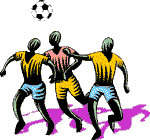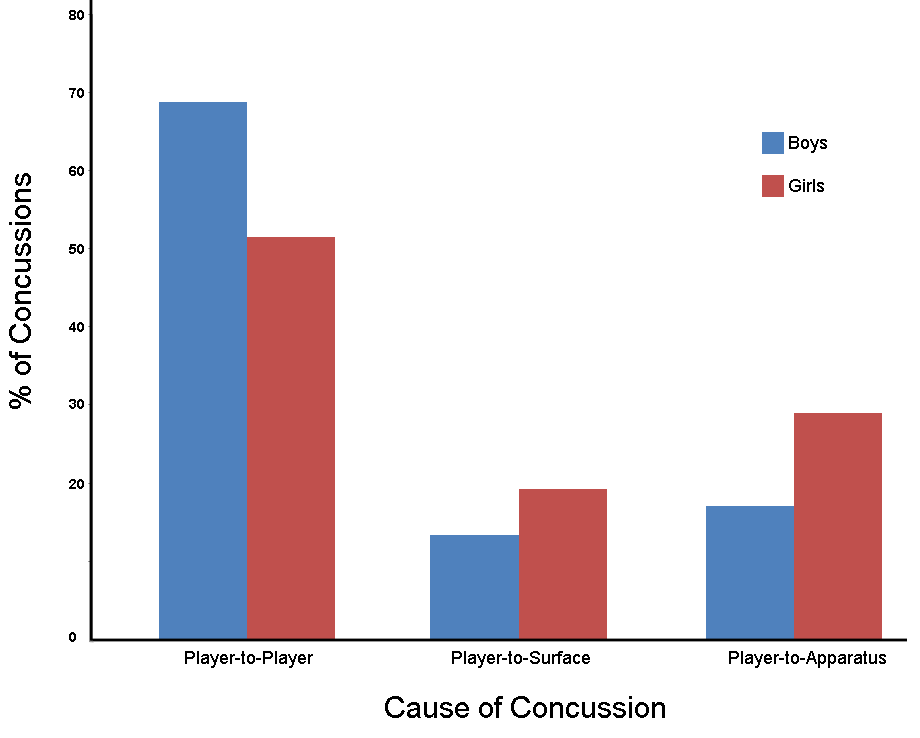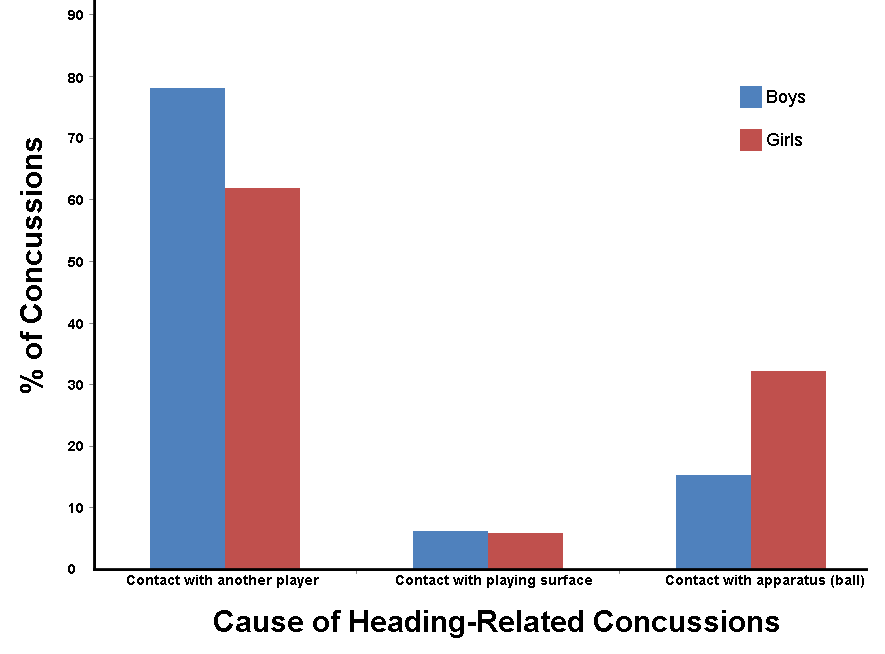Neuroscience For Kids
Heading off Concussions
July 27, 2015
Sports-related concussions are making headlines across the world.
Although head and brain injuries related to football have received most of
the press, concussions suffered by soccer players are of significant
concern.

Many people believe that heading a soccer ball can lead to a concussion. The Parents and Pros for Safer Soccer, an organization that includes Brandi Chastain, a former US Womens Soccer player, has called for a ban on heading the ball for players younger than 14 years old. The organization hopes that this rule change will reduce the number of concussions. Does heading a soccer ball really cause concussions? To find out, researchers at the University of Colorado investigated causes of concussions in male and female high school soccer players.
The research team, led by Dr. R. Dawn Comstock, examined nine years of data (2005-2014) provided by the National High School Sports-Related Injury Surveillance Study. These data showed that girl soccer players had 627 concussions and boy soccer players had 442 concussions. The most common cause of a concussion was player-to-player contact (68.8% of the concussions in boys; 51.3% of the concussions in girls). Contact with the playing surface (13.3% of the concussions in boys; 19.2% of the concussions in girls) and contact with the playing apparatus such as the ball (17.0% of the concussions in boys; 29.0% of the concussions in girls) caused the remainder of the concussions. So, contact with the ball resulted in relatively few concussions.
Although ball-to-head contact was not the major cause of concussions, the act of heading the ball did cause the most concussions. For boys, 30.6% of the concussions occurred while heading the ball; for girls, 25.3% of the concussions occurred while heading the ball. The most common event for heading injuries were when players collided with each other: these player-to-player injuries caused 78.1% of the heading-related concussions in boys and 61.9% of the heading-related concussions in girls.


Dr. Comstock and her coworkers suggest that banning heading in youth soccer might prevent some concussions, but many people would not want to see the rules of the game changed. Rather than banning heading, more strict enforcement of existing rules and calling more fouls especially for aggressive play may be more effective at reducing concussions.
Do you have other ideas for reducing concussions during soccer games? Let me know!
Reference and more information:
- Comstock RD, Currie DW, Pierpoint LA, Grubenhoff JA, Fields SK., An Evidence-Based Discussion of Heading the Ball and Concussions in High School Soccer.JAMA Pediatr. 2015 Jul 13. doi: 10.1001/jamapediatrics.2015.1062.
- Soccer and the Brain
- Heads First
Copyright © 1996-2015, Eric H. Chudler, University of Washington
